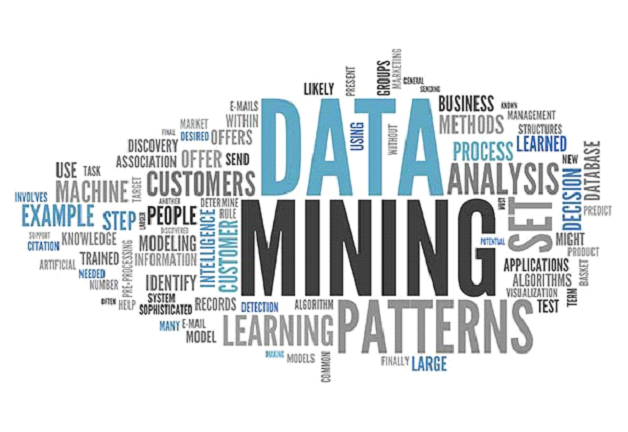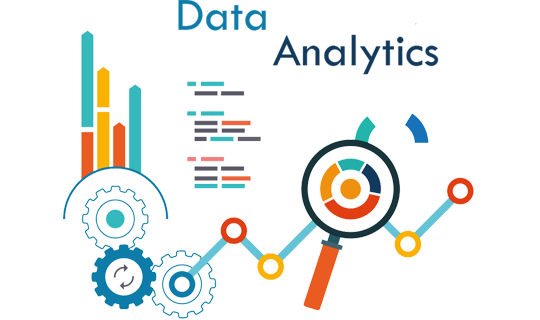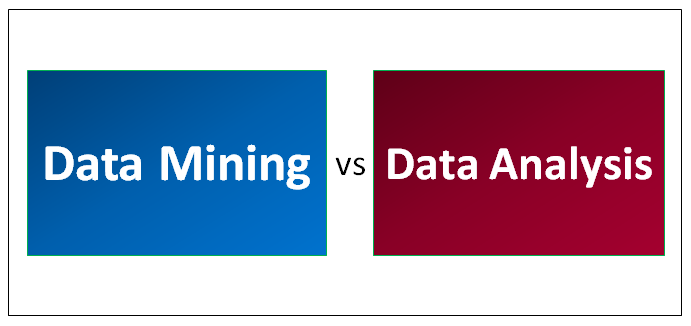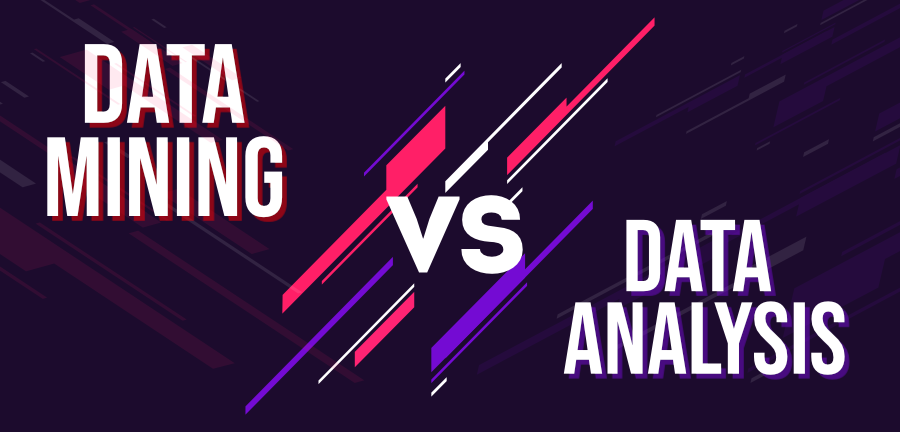The undeniable fact is that data is everywhere. While both data mining and data analytics are a subset of business intelligence, that’s all they have in common. One of the key differences between data analysis and data mining is that the latter is a step in the data analysis process. This article will discuss in depth the difference between data mining and data analysis.
Table of Contents
What Is Data Mining

Data mining is the process of extracting usable data from large amounts of raw data. It is a subset of data analysis. It means an efficient and continuous method to identify and discover hidden patterns and data throughout huge datasets. Also, it is used to build machine learning models, which are further used in artificial intelligence. It uses complex mathematical algorithms to segment data and assesses the probability of future events. Data mining is also known as knowledge discovery in data.
In order to understand what data mining is, you need a pattern recognition mental framework and coding ability to make markers in data mining. Data mining experts typically construct algorithms to determine relevant structures in data. A data mining expert is still a data analyst with comprehensive knowledge of inductive learning and hands-on coding. Data mining can be of interest when a company uses only selected information, which is not representative of the entire sample group, to prove a hypothesis.
Data mining helps businesses understand which ad campaigns are likely to generate the most engagement, display customized commercials, segment customers, and optimize ad spending. It also helps businesses detect fraudulent activity and predict possible fraud. Not only can data mining improve external market performance, but it can also be used to understand employee behavior, predict attrition, and evaluate HR policies.
What Is Data Analytics

Data analysis is a process of data extraction, cleaning, transformation, modeling, and visualization aimed at extracting important and useful information that facilitates drawing conclusions and forming decisions. It is a superset of data mining. In statistical applications, data analysis can be divided into exploratory data analysis, descriptive statistics, and confirmatory data analysis.
In order to understand what data analysis is, you need a more analytical approach to data analysis. A data analyst usually cannot be alone. The work summary includes the formulation, cleaning, transformation, and modeling of the raw data, and the final presentation in the form of a graph/non-graph visualization. Data analytics is used in business to help organizations make better business decisions.
Whether it’s market research, product research, positioning, customer reviews, sentiment analysis, or any other problem where data exists, analyzing data will provide the insights organizations need to make the right choices. Data analytics is important to businesses today because data-driven choices are the only way to truly have confidence in business decisions.
Key Differences Between Data Analytics and Data Mining

Team Size
Data mining can be performed by a single expert with excellent technical skills. With the right software, they are able to collect data ready for further analysis. At this stage, there is simply no need for a larger team. From here, data mining experts typically report their findings to clients, taking the next steps to others.
However, when it comes to data analysis, a team of experts may be required. They need to evaluate the data, find patterns, and draw conclusions. They can use machine learning or predictive analytics to help, but there is still a human element involved.
Data analytics teams need to know the right questions to ask — for example, if they work for a phone company, they might want to know the answer to “how is VoIP used in business.” Data mining experts can provide evidence of where and how often it is used, but data analysis reveals how and why.
Their goal is to discover information together and figure out how to use the collected data to answer questions and solve business problems.
Advances in artificial intelligence could bring serious changes to the analysis process. AI systems can analyze hundreds of data sets and predict various outcomes, providing information on customer preferences, product development, and marketing channels.
AI-driven systems will soon be able to complete the mundane tasks of data analysis teams, freeing up time for more important work. It can significantly increase the productivity of data scientists by helping to automate elements of the data analysis process.
Data Structure
When it comes to data mining, research is mostly done on structured data. Experts will use data analysis programs to study and mine data. They report their findings to clients through charts and spreadsheets. Due to the complexity of the data, this is often a very intuitive interpretation. Clients are usually not data mining experts, nor do they claim to be!
Therefore, the data needs to be interpreted fairly simply as a graph or bar chart. As with the previous phone company example, if a customer needs to know the data behind how many people click on a “what is a VoIP number” link on their website, it should be displayed in an easy-to-read graph rather than a complex document.
Data mining experts build algorithms to identify structures in data and then interpret them. It is based on mathematical and scientific concepts and is ideal for businesses to collect clear and accurate data.
This is in contrast to data analysis, which can be done on structured, semi-structured, or unstructured data. They are also not responsible for creating algorithms like data mining experts. Instead, their task is to spot patterns in the data and use them to brief clients on what to do next.
This can be applied to a company’s business model. Marketing teams may want to see their customer and industry data in front of them. If they can understand the behavior of competitors’ consumers, then they can apply it to their own strategy.
Data Quality
Data mining requires data to be presented in a different way compared to data analysis. While data mining is used to collect data and search for patterns, data analysis tests assumptions and transform results into accessible information. This means that the quality of the data they process may vary.
Dating mining experts will work with large data sets and extract the most useful data from them. Therefore, the quality of the data they use is not always top-notch because they use large, sometimes free, datasets. Their job is to mine the most useful data out of it and report their findings in a way that businesses can understand.
However, data analysis involves collecting data and checking data quality. Typically, data analysis team members will work with high-quality raw data that is as clean as possible. When the data is of poor quality, it can negatively impact the results, even if the process is the same as with clean data. This is a crucial step in data analysis, so the team must check that the data quality is good enough.
Hypothesis Testing
The hypothesis is actually a starting point and requires further research, such as cloud-native databases being the way forward. The idea was constructed from limited evidence and then further investigated.
A key difference between data analysis and data mining is that data mining does not require any preconceived assumptions or concepts before processing the data. It just compiles it into a useful format. However, data analysis does require a hypothesis to test because it is looking for an answer to a specific question.
Data mining is about identifying and discovering patterns. Experts will build mathematical or statistical models based on the results they derive from the data. Because they are not led by assumptions, data mining experts often work with large datasets to gather potentially useful data as widely as possible. This gives them the opportunity to shrink the data, ensuring that the data left at the end of the process is available and reliable. The process is like a funnel, starting with a large data set and filtering it into more valuable data.
Instead, data analysis tests a hypothesis, extracting meaningful insights as part of their research. It helps to prove hypotheses and can be discovered using data mining in the process. For example, a business might start with an assumption like “Having a free sample link at checkout will result in a 15% increase in conversions”. It can then be implemented and tested on the website.
The data analysis team will test hypothesis statements by analyzing each visit to the site. They can even split the test into A/B for link placement, where “A” leaves example links at the top of the page and “B” at the bottom. This provides a deeper understanding of consumer behavior when purchasing an item and lets businesses know the best places to put links to free samples.
Forecasting
One of the tasks of a data mining expert is to predict what can be explained from the data. They found patterns in the data and noted what might have been possible through the use of plausible future predictions.
Understanding how the market reacts to certain products or technologies can be important for brands and businesses in many industries. Implementing new technologies such as the TCPA dialer comes with risks and benefits, and data can help businesses decide if this is the right solution for them.
As such, the work done in the data mining process is critical for businesses that rely on forecasting trends.
In addition to this, data mining experts will understand the data by analyzing the following:
- Clustering – Studying and recording groups of data, then analyzing them based on similarity.
- Bias – Detecting anomalies in your data, and how and why this happens.
- Correlation – The study of how close two or more variables is to determine how they are related.
- Classification – finding new patterns in data.
This all helps businesses make informed decisions based on real data from consumers and the markets in which they operate.
On the other hand, data analysis is more about drawing conclusions from data. It works in part with data mining predictions by helping to apply the techniques in its discoveries. Forecasting is not part of the data analysis process as it is more concerned with the data at hand. They collect, manipulate and analyze data. They can then write detailed reports based on their conclusions.
Prediction is not to be confused with predictive analytics, which takes into account various inputs and then predicts future behavior. It provides a comprehensive overview of past, present, and future consumer behavior. Therefore, it can even be applied to events that have already occurred.
Predictive analytics focuses more on statistics to predict outcomes. This can be beneficial for businesses looking to optimize their marketing campaigns, although it doesn’t provide market insight beyond that.
This is different from forecasting, which focuses on predicting market trends for the next few years.
Responsibilities
Expectations of data analysis and data mining results vary because the responsibilities of the two are different.
While data mining is responsible for discovering and extracting patterns and structures in data, data analysis uses analytical methods to develop models and test hypotheses.
Data mining experts will work with three types of data: metadata, transactional, and non-operational. This reflects their responsibility in the data analysis process. Each “transaction” generates transactional data on a daily basis, hence the name. This includes data on what customers click on the website. For example, if you’re a software company, you can track how many customers click through searches like “best UCaaS provider.”
Non-operational data is data generated by a department that can be used for the benefit of the company. This includes investigating data to gain insights and then predicting the future. Also, metadata refers to the database design and how it holds other data. This includes breaking down data into categories such as field names, lengths, types, etc. Organized in this way, experts find it easier to retrieve, interpret, or use the information.
In data analysis, however, the responsibility of the team is not the algorithm, but the interpretation. They predict yield and interpret the underlying frequency distribution of continuous data. This allows them to report relevant data as they complete their tasks.
Companies often turn to data analytics teams to help them make important strategic decisions. This is one of their greatest responsibilities. Here are the different types of data a team might analyze:
- Social media content engagement and social networking activity
- Customer feedback from emails, surveys, and focus groups
- Page visits and internet clickstream data
The results of these surveys can lead to new revenue opportunities and increased efficiencies within the business. It is their responsibility to ensure that they produce consistent results that can serve as a guide for the future.
Conclusion
The terms data mining and data analysis have a long history. Both data mining and data analysis are key to flawless execution. Regardless of the field, you can’t deny the importance of both in the data-driven world of the 21st century. They have been used interchangeably by some groups of users, while a few have distinct distinctions in both areas. Data mining is often part of data analysis, where the goal or intent is still simply to identify or discover patterns in the data set. Data analysis, on the other hand, is performed as a complete package to derive meaning from databases that may or may not include data mining. Both fields require different skills, abilities, and expertise. Over the next few years, both areas will feel a huge need for data, resources, and jobs.




